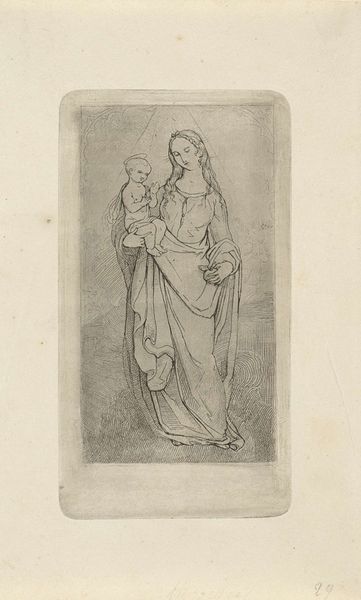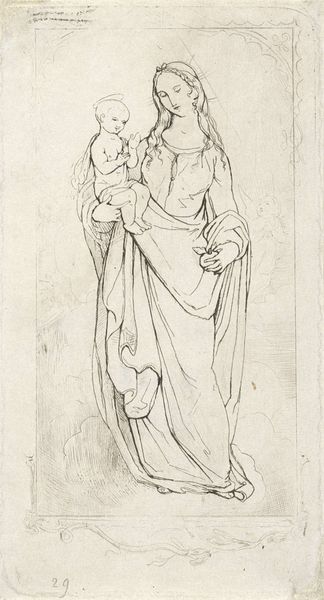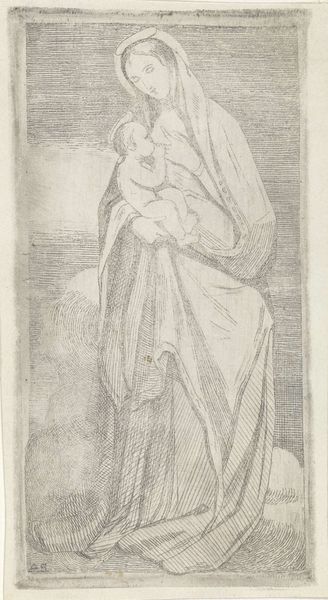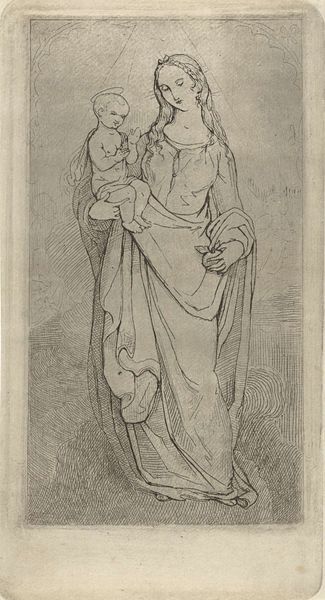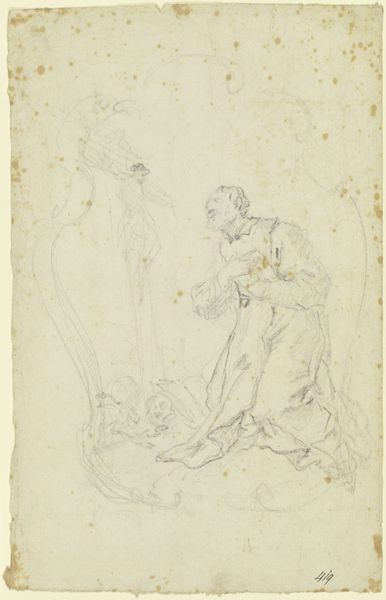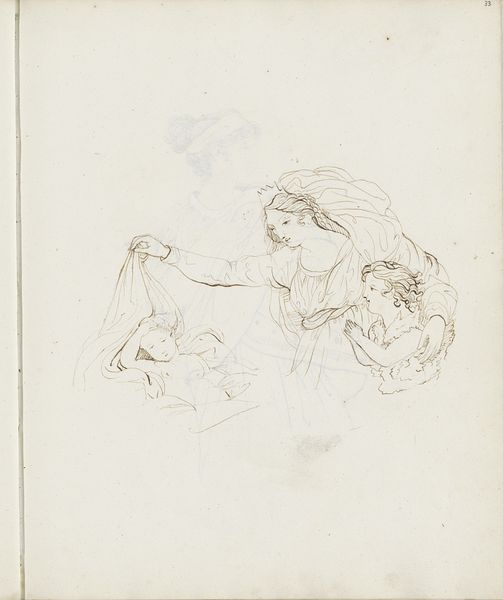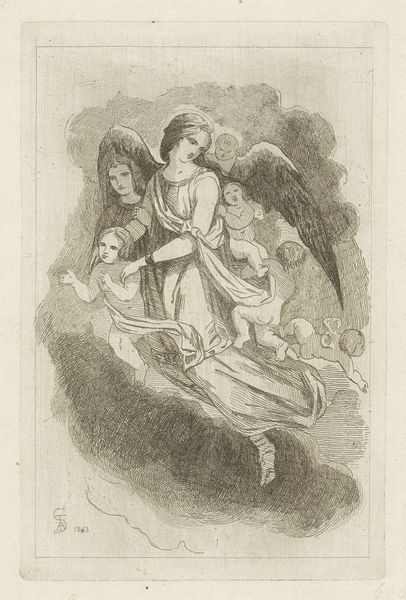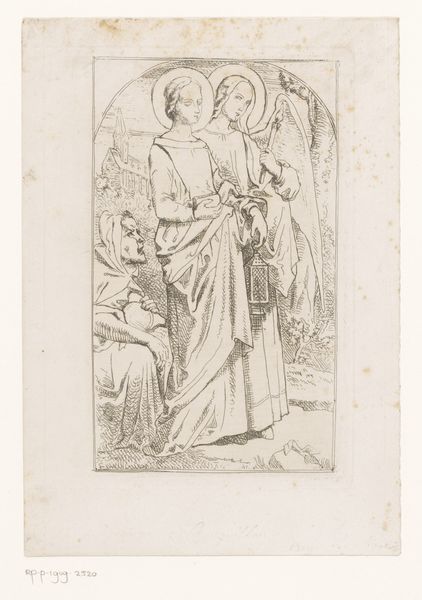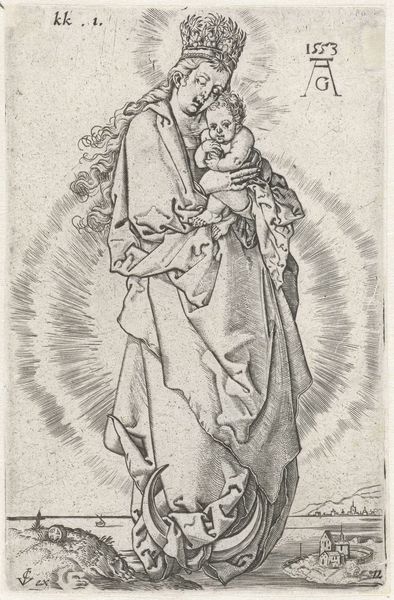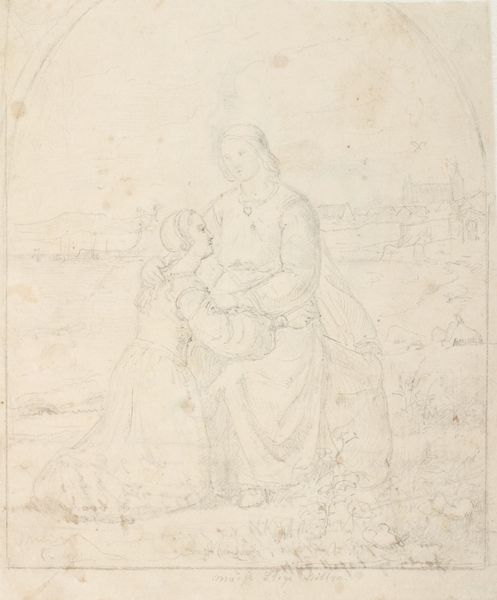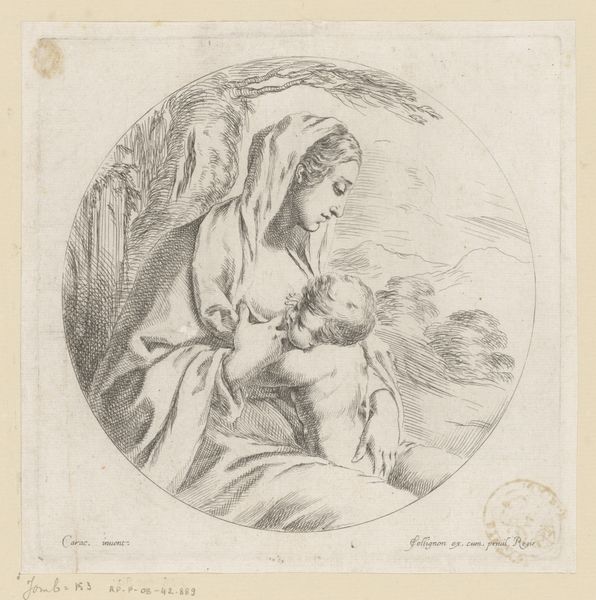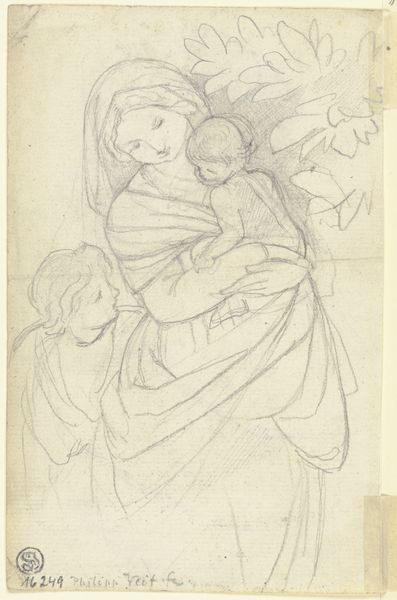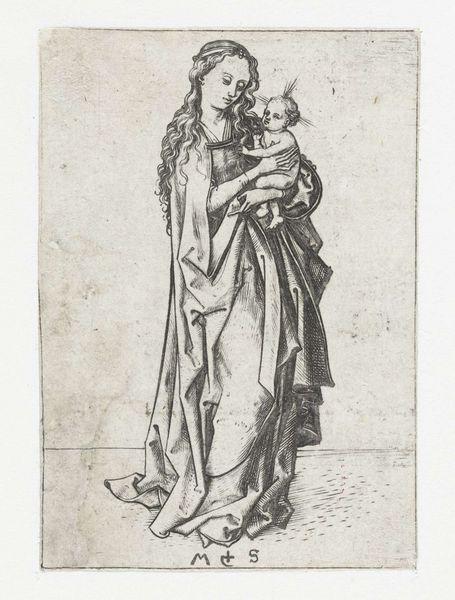
drawing, print, intaglio, paper, ink
#
portrait
#
drawing
#
medieval
# print
#
intaglio
#
pencil sketch
#
figuration
#
paper
#
ink
#
history-painting
Dimensions: height 142 mm, width 76 mm
Copyright: Rijks Museum: Open Domain
Curator: We're looking at "Virgin Mary and the Christ Child" by Theodoor Schaepkens, dating roughly between 1825 and 1883. It’s rendered through an intaglio print, using both ink and pencil on paper. Editor: It feels ethereal, almost like a dream. The soft lines create a hazy atmosphere around the figures, and its small scale pulls you in. Curator: Indeed, the composition presents a studied balance, framing the central figures within a delicate border. Note how the lines both define form and create subtle tonal variations. Schaepkens masterfully utilizes intaglio to suggest depth. Editor: Beyond the immediate composition, what strikes me is the conscious reaching back to earlier medieval art. This portrayal seems almost deliberately archaic in its style, referencing earlier modes of representation for its figures. Considering that, how do we understand its existence and production in the mid-19th century? Curator: Excellent point. The historical context is vital. The 19th century saw revivals of earlier styles, especially Gothic and medieval. It reflects a nostalgic desire to reconnect with perceived spiritual purity of past eras, a sentiment linked to broader social and religious shifts. Schaepkens, situating his work within these revivalist trends, is thus actively engaging with complex contemporary debates concerning faith and historical identity. Editor: So it's less about a literal depiction of a biblical scene and more about engaging with evolving notions of faith and nationalism in the 19th century. Curator: Precisely. It invites the viewer to contemplate not just the subject but also the work's situation within this framework. The seemingly delicate rendering belies a complex layering of historical awareness and ideological positioning. Editor: Well, it definitely reframes how I initially perceived its delicate and dreamy qualities. Considering its engagement with contemporary debates, Schaepkens successfully constructed a dialogue across time. Curator: Yes, considering the art historical movements informing its execution and historical moment helps uncover more about its function and impact. Editor: Indeed, what at first appears like a simple drawing becomes a focal point of several powerful artistic and cultural ideas.
Comments
No comments
Be the first to comment and join the conversation on the ultimate creative platform.
